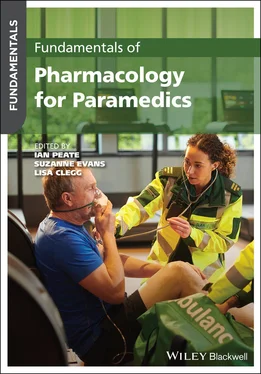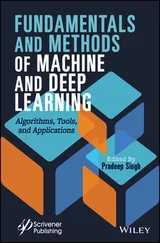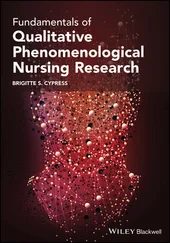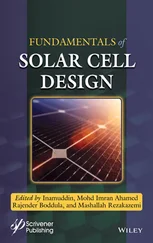2 The purposes for which a medication can be used are the:Mechanism of actionContraindicationsIndicationsNone of these.
3 The conditions in which a drug cannot be used are the:Mechanism of actionIndicationsNone of these.
4 When drugs such as alprazolam are referred to as benzodiazepines, they are being classified according to their:Mechanism of actionIndicationsChemical classOriginal trade name.
5 When drugs such as reboxetine are referred to as antidepressants, they are being classified according to their:Mechanism of actionIndicationsChemical classOriginal trade name.
6 A medication which is prescribed for an indication other than its listed indications is being used:IllegallyOff‐labelEven though it is contraindicatedNone of the above.
7 The drugs known as specific serotonin reuptake inhibitors, which include fluoxetine (Prozac®), would act by binding to:A receptor for a neurotransmitterAn ion channelAn enzymeA transport molecule.
8 In general, the more selective a drug is in its binding sites:The fewer side effects it will haveThe more easily it will reach its site of actionThe more potent it will beThe more it will interact with other drugs.
9 When administering adrenaline intravenously, which dilution is most appropriate?1:1001:10001:10 0001:100 000
10 A drug that is an antagonist or blocker of a receptor is likely to ‘fit’ the receptor chemically better than a drug that is an agonist.TrueFalse
11 A drug, such as a general anaesthetic, that can penetrate the blood–brain barrier very rapidly after intravenous administration is likely to be:Highly water solubleA proteinHighly lipid solubleNo drugs can penetrate an intact blood–brain barrier.
12 A medication dose may need to be adjusted down in which of these situations?Renal failureHigh first‐pass metabolismDiarrhoeaVomiting
13 The NSAID aspirin has its effects due to action at:An ion channelA neurotransmitter receptorA transport moleculeAn enzyme.
14 You are attending a patient who has suffered trauma and lost a lot of blood. The patient’s heart rate is normal, even though their blood pressure is low. Which of the following medications being taken is most likely to be responsible for this?IbuprofenMetforminAtenololTetracycline
15 If a drug undergoes extensive first‐pass metabolism, which of these routes should be avoided as administration routes for this drug?IntramuscularIntravenousOralIntranasal
Chapter 2 How to use pharmaceutical and prescribing reference guides
Nigel Conway and Jennifer Dod
This chapter aims to introduce you to commonly used pharmaceutical and prescribing reference guides and their use in paramedic practice. Specific focus is placed on the Joint Royal Colleges Ambulance Liaison Committee (JRCALC) Clinical Practice Guidelines (2019).
For clarification:
The JRCALC Clinical Guidelines (2019) full reference book will be referred to throughout this chapter as JRCALC Guidelines
The JRCALC Clinical Guidelines (2019) Pocket Book will be referred to in this chapter as JRCALC Pocket Book
The JRCALC Clinical Guidelines digital application (app) will be referred to in this chapter as JRCALC app.
After reading this chapter, the reader will:
1 Be aware of the different pharmaceutical and reference guides that may be used in paramedic practice
2 Understand how to navigate the:JRCALC Guidelines (full reference book)JRCALC Pocket BookJRCALC app
3 Be aware of other common pharmaceutical resources available to the paramedic.
How frequently are the hard‐copy JRCALC Guidelines reviewed and republished?
How many HCPC standards of proficiency are there?
How many different forms of the JRCALC Guidelines are available?
What is the unique feature of the ‘JRCALC plus’ feature?
What are the core paramedic care approaches to the fundamentals of medicine management?
The world of medications is vast and learning about them can be daunting for all allied healthcare and nursing profession students, as well as registered professionals. The people you care for may have extensive past medical history and lists of medications specific to treatment interventions. You need to be able to assess, review, administer, consider interactions, monitor and evaluate the effects of these medications.
Regulatory and professional bodies have specific standards of practice which are designed to be applicable to all areas of a healthcare professional’s work. In the United Kingdom, paramedics are accountable to the public and their profession through the Health and Care Professions Council (HCPC). There are two sets of HCPC standards that govern paramedic practice:
HCPC (2016) Standards of conduct, performance and ethics
HCPC (2014) The standards of proficiency for paramedics (latest review point 2020 to be published).
These two sets of standards apply to all areas of paramedic practice including medicines and pharmacological management (i.e. knowledge, understanding and clinical application) as related specifically to the paramedic role.
The HCPC (2016) and HCPC (2014) standards are essentially frameworks within which all registered UK paramedics must work. Ambulance services and paramedics outside the UK will be guided by equivalent organisations. Examples of these are:
Australian Council of Ambulance Authorities (CAA), covering Australia, New Zealand and Papua New Guinea: www.caa.net.au/
Paramedicine Board, Australia: www.paramedicineboard.gov.au/Professional‐standards.aspx
Australian Clinical Practice Guidelines: Ambulance and MICA Paramedics (2018): www.ambulance.vic.gov.au/wp‐content/uploads/2018/07/Clinical‐Practice‐Guidelines‐2018‐Edition‐1.4.pdf.
HCPC Standards of conduct, performance and ethics
This framework (HCPC, 2016) establishes what the expectations are for all UK‐registered paramedics specific to behaviour, public expectation and fitness to practise. The framework covers 10 specific areas of paramedic practice in relation to conduct, performance and ethics which in the context of this book can be applied to the specific area of medicines management as well as all other areas of a paramedic’s practice. These are:
Promote and protect the interests of service users and carers
Communicate appropriately and effectively
Work within the limits of your knowledge and skills
Delegate appropriately
Respect confidentiality
Manage risk
Report concerns about safety
Be open when things go wrong
Be honest and trustworthy
Keep records of your work.
Specific drugs and examples of application to paramedic practice, as well as legal and professional issues, can be read and explored in the chapters that follow.
HCPC Standards of proficiency for paramedics
This framework (HCPC, 2014) establishes what UK‐registered paramedics must do specific to their regulated profession, which in the context of this book can be applied to the specific area of medicines management as well as all other areas of a paramedic’s practice. There are 15 areas of proficiency covered by these standards with more detailed subsections under each proficiency. All paramedics must comply with the standards of proficiency.
Practise safely and effectively within their scope of practice.
Practise within the legal and ethical boundaries of the profession.
Maintain fitness to practise.
Practise as an autonomous professional, exercising their own professional judgement.
Be aware of the impact of culture, equality and diversity on clinical practice.
Читать дальше












